Submitted by WA Contents
New images unveiled for Axel Springer Office Building in Berlin designed by OMA
Germany Architecture News - Oct 06, 2016 - 16:42 21711 views
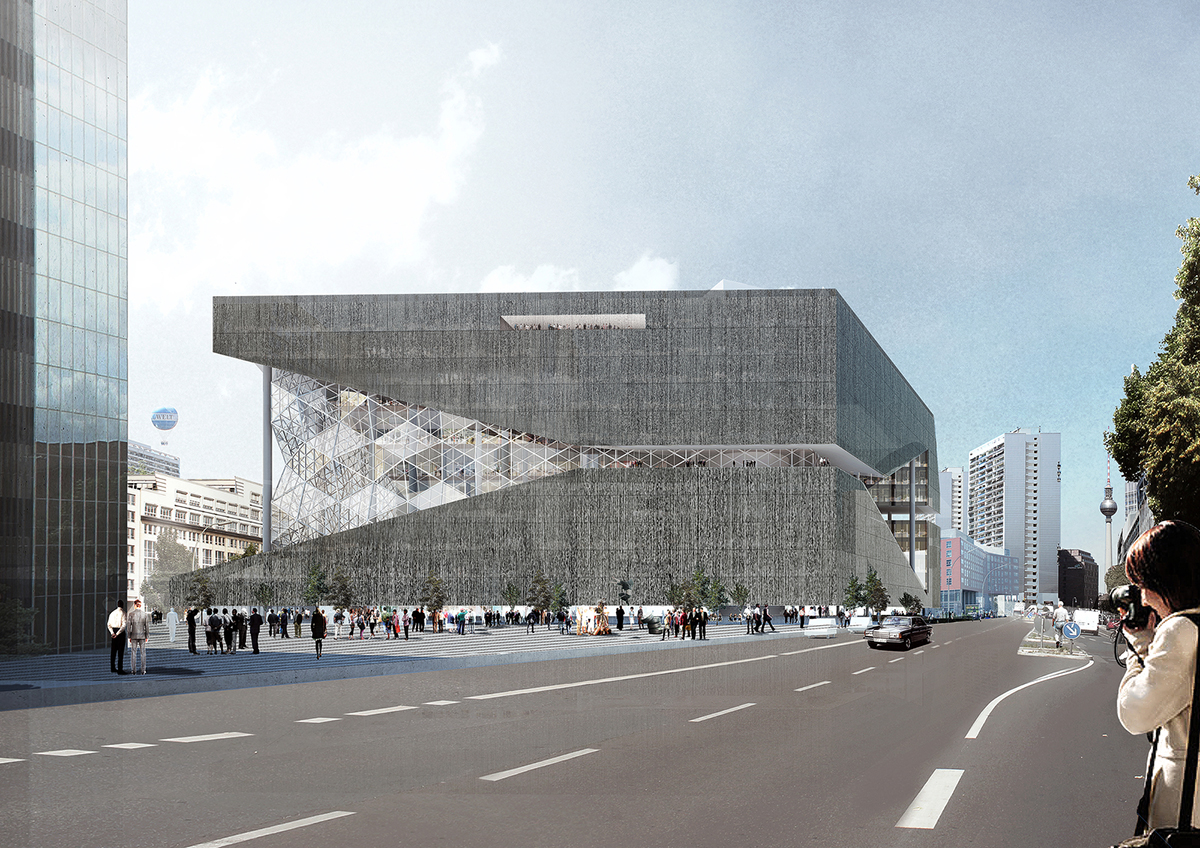
Axel Springer, a German media company, has officially launched the plans for its new building in Berlin at a ceremony today, celebrating the 50th anniversary of Axel Springer’s publishing building. Designed by Office For Metropolitan Architecture (OMA), located on the site of the former Linden park, opposite the existing Axel Springer headquarters on Zimmerstrasse, the building will be able to accommodate 3500 employees.
The design features a 30-meter-high atrium, with 3-d façade elements, which runs diagonally through the center of the building. A park will be built on the roof, replacing the original. Both will be accessible to the public.
Video by Axel Springer
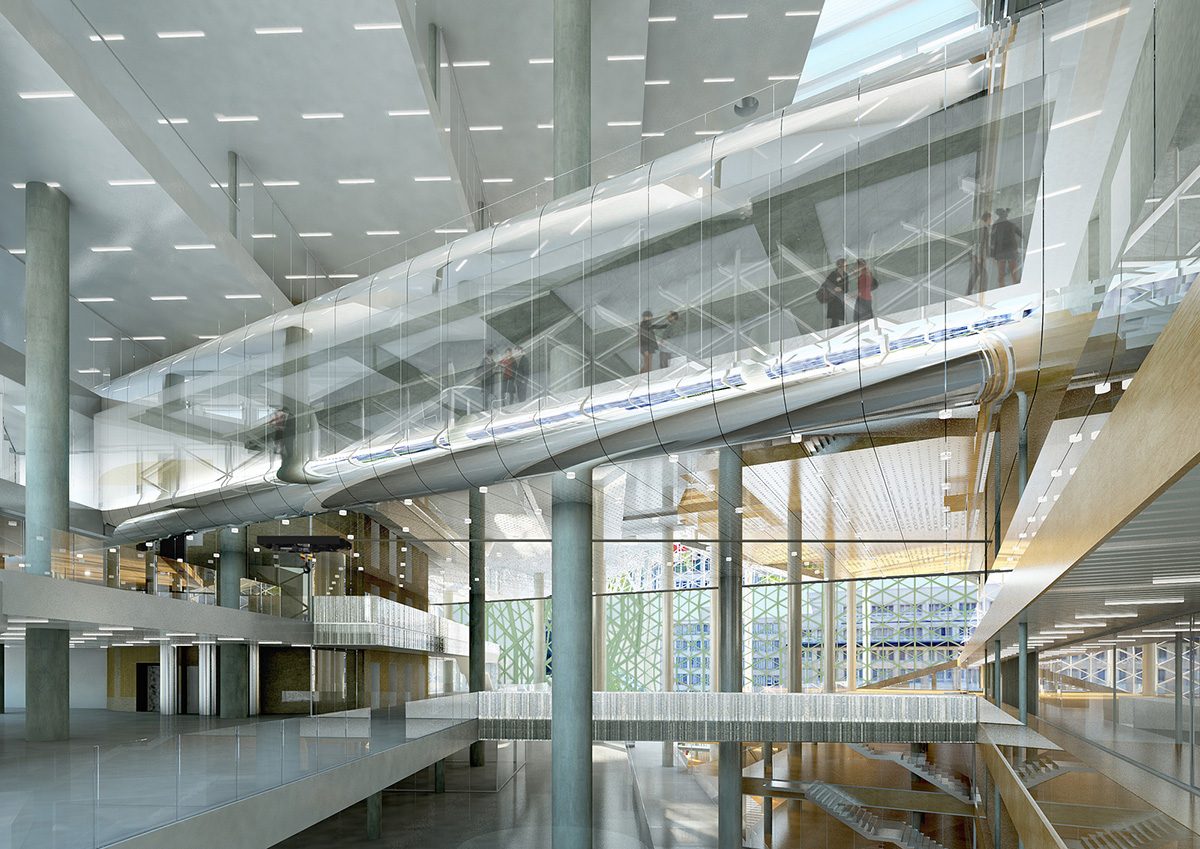
Image © OMA
In his welcome address, Dr Mathias Döpfner, CEO of Axel Springer SE said: “With our new building, we wish to bring the Axel Springer family in Berlin closer together while at the same time shaping the future of working in the digital world through architecture. It is about a symbolically powerful home, yet above all about a cultural transformation through radically modern workspaces.”
"Over the years, Berlin has been a profound source of inspiration, and with Axel Springer we are thrilled to continue our long engagement with this city. We are lucky to have a client who views architecture as an instrument of change, and with this building, we hope to address a central dilemma of the contemporary office: as computer-based work has become largely intangible and silent, how can people effectively communicate in a workspace which fosters both concentration and vigorous interaction?,'' said Rem Koolhaas in his presentation.
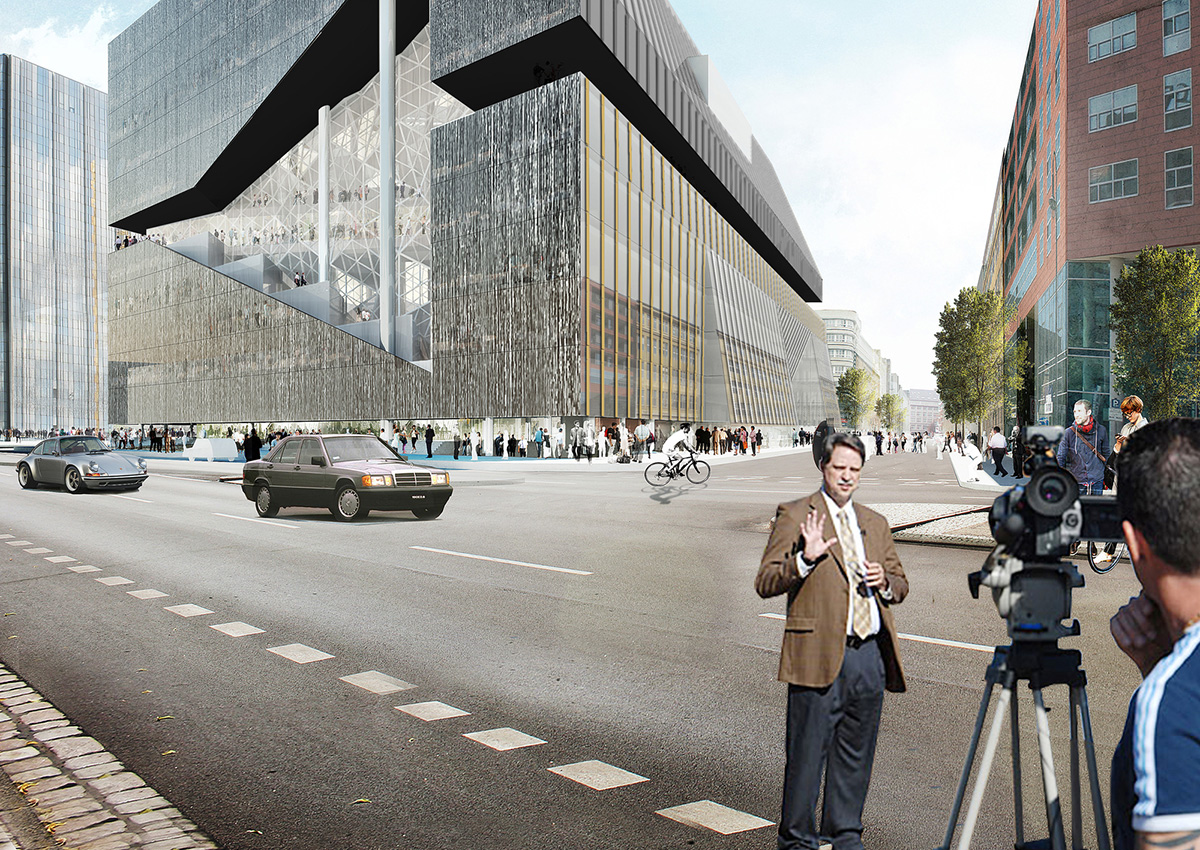
Image © OMA
OMA won the competition for Axel Springer’s new building in 2014. The brief asked for a new space to house Axel Springer’s growing business divisions and digital offers, while reflecting a modern working environment. The project is led by Rem Koolhaas, Chris van Duijn, and Katrin Betschinger.
Axel Springer has launched a move from print to digital media. Its new building on the campus in Berlin will act both as a symbol and a tool in this transition - a building to lure the elite of (Germany's) digital Bohemia. Bisected by a diagonal atrium that opens up to the existing Springer buildings, the essence of the design is a series of terraced floors that together form a 'valley' that creates an informal stage at the centre - a place to broadcast ideas to other parts of the company.
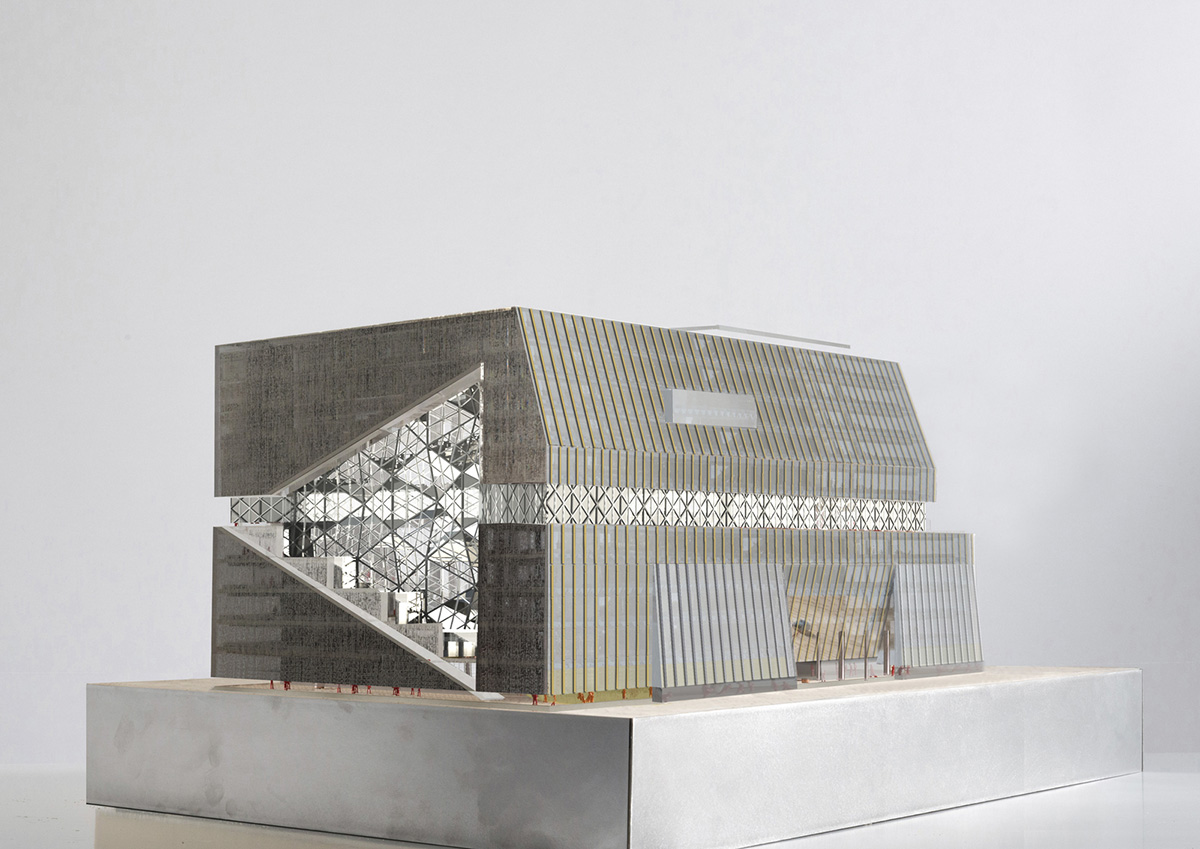
Image © OMA
The genius of print is that it is a cheap, physical, hyper-accessible embodiment of a complex collective effort, for which so far the digital has been unable to find an equivalent. Architectural offices are similar to newspapers in that they produce complex assemblies and selections from radically different sources of information.

Image © OMA
''As architects, we have experienced the advantages: speed, precision, smoothness. But we have also suffered one crucial consequence: the relationship between the worker and his computer, which isolates him in a bubble of introverted performance, inaccessible to collective overview,'' said OMA.
In the classical newsroom, dominated by smoking, typing journalists, each inhabitant was aware of the labour and progress of his colleagues and of the collective aim: a single issue, with the deadline as a simultaneous release. In the digital office, staring intently at a screen dampens all other forms of attention and therefore undermines the collective intelligence necessary for true innovation.

Image © Frans Parthesius
OMA therefore proposes a building that lavishly broadcasts the work of individuals for shared analysis. The new office block is injected with a central atrium that opens up to the existing Springer buildings - a new centre of the Springer campus.
The design was developed around a series of terraced floors that together form a digital valley. Each floor contains a covered part as a traditional work environment, which is then uncovered on the terraces. Halfway through the building, the valley is mirrored to generate a three dimensional canopy.
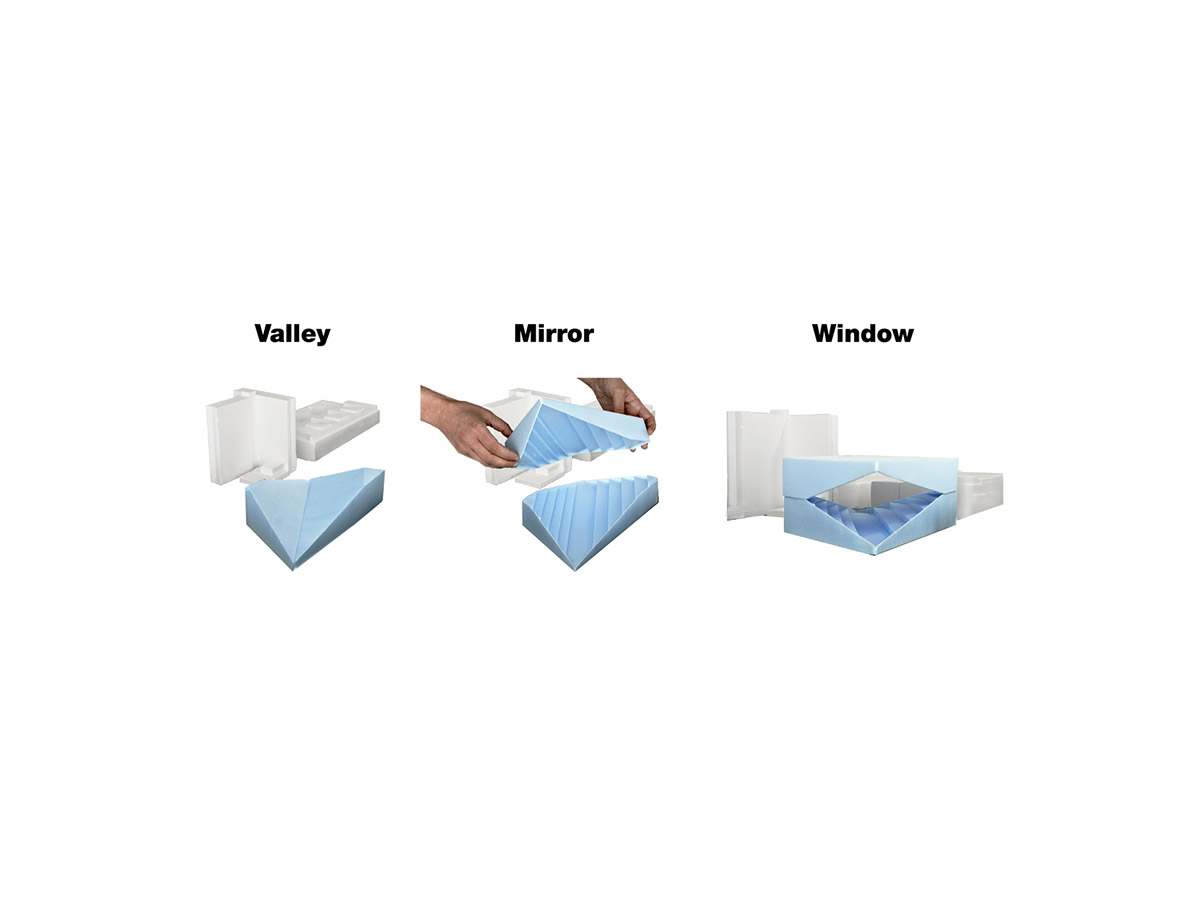
Image © OMA
The common space formed by the interconnected terraces offers an alternative to the formal office space in the solid part of the building, allowing for an unprecedented expansion of the vocabulary of workspaces: a building that can absorb all the question marks of the digital future.
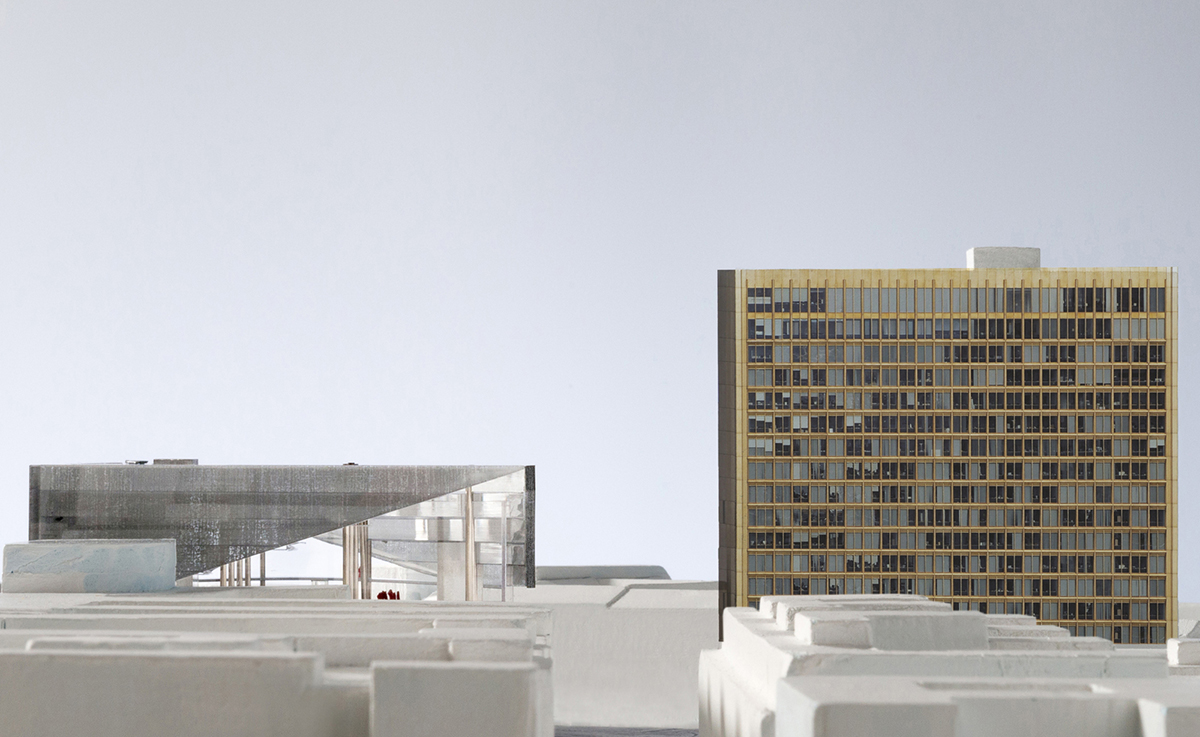
Image © Frans Parthesius
The public can experience the building on three levels - ground floor lobby, meeting bridge, and roof-top bar. The meeting bridge is a viewing platform from which the visitors can witness the daily functioning of the company and how it evolves. The ground floor is open to the city and contains studios, event and exhibition spaces, canteens and restaurants.
The building will be situated opposite the existing Axel Springer headquarters on Zimmerstrasse, a street which previously separated East and West Berlin, at one of the city's most significant locations.

Image © Frans Parthesius
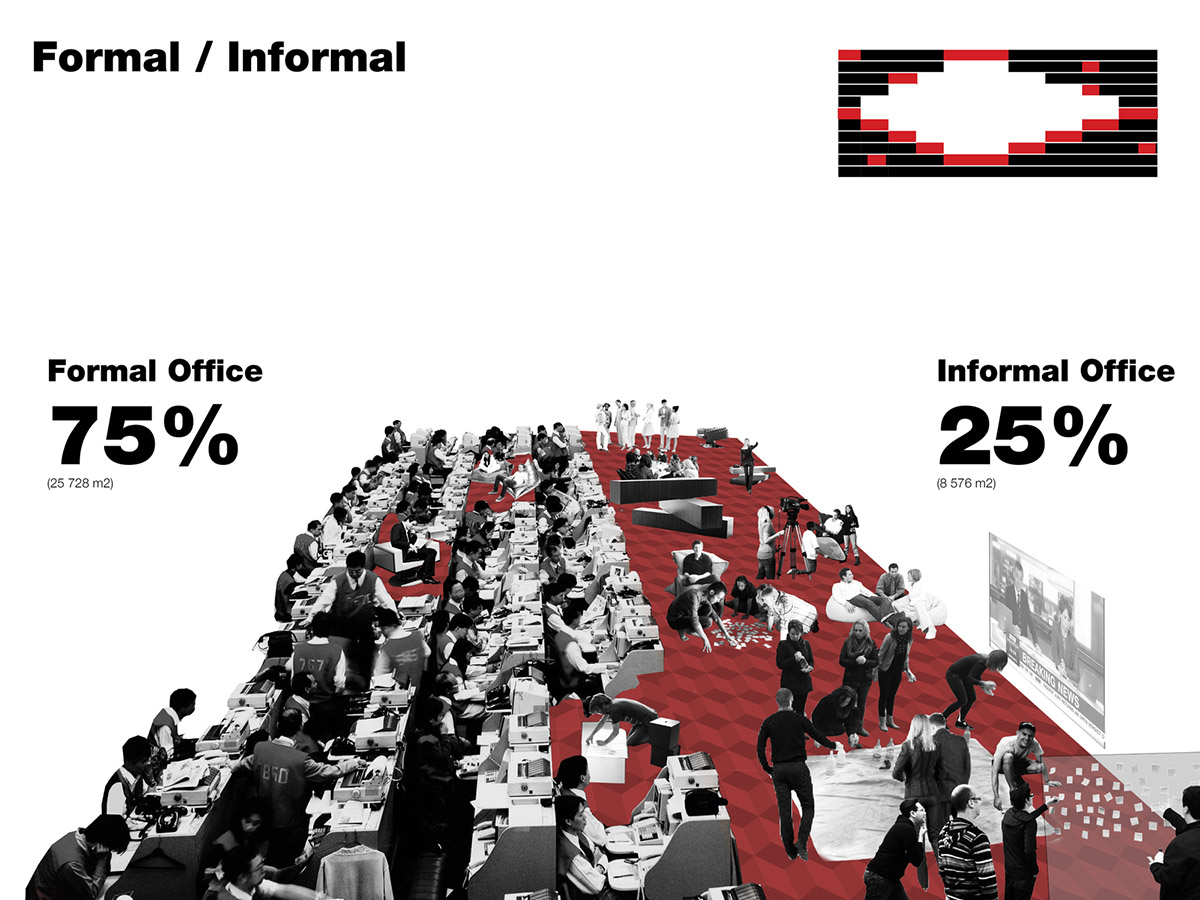
Image © OMA
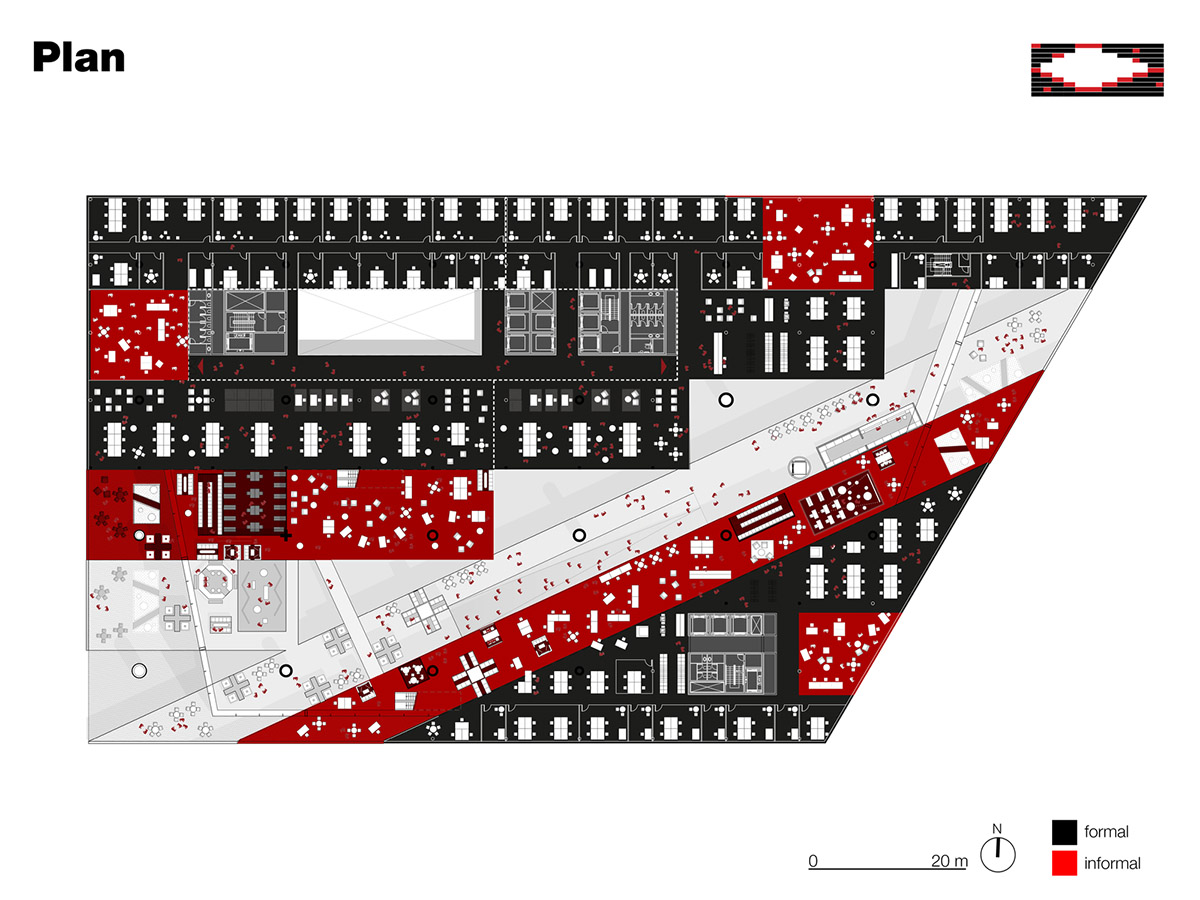
Image © OMA
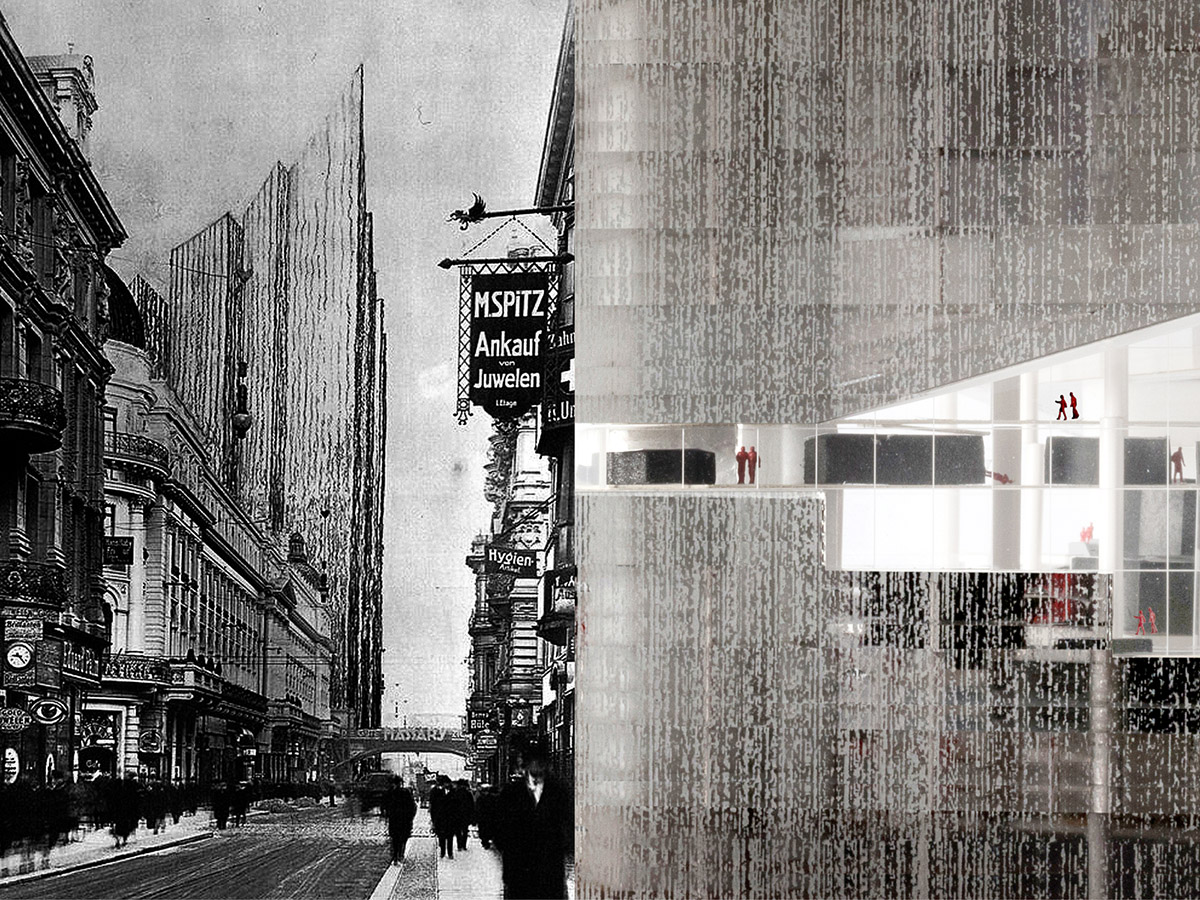
Image © OMA

Image © Frans Parthesius
Top image © OMA
> via OMA
